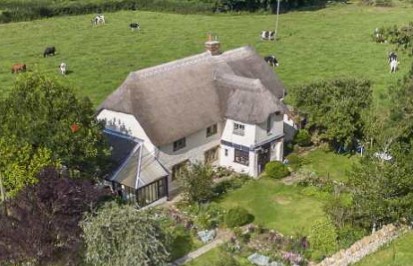Introduction
John Whebby was born at East Chinnock and probably moved to Hardington after marrying Mary Apsey in 1820. He was a thatcher in the late 1820s and a farmer at Eastfield from the 1830s until his wife’s death in 1866. Later, he lived with his wife’s niece at Yetminster and Woolcombe before returning to Hardington at the end of his life. His estate at death included one leasehold cottage with two tenements at Hardington and three freehold cottages.
Birth
John was born at East Chinnock in about 1794, the fourth of eight children born to William and Ann Whebby. His father, William, was a weaver.
Marriage
On 16 March 1820, John married Mary Apsey, the daughter of Joseph and Mary Apsey, at Hardington.
On 8 April 1823, Mary Whebby’s sister, Susannah Apsey, married William Guppy, a farmer.
Occupations
John was a thatcher in 1827.[1] He was a farmer from at least 1830 to 1866.[2] The 1851 census recorded him as a farmer of 40 acres employing four labourers. A decade later, he farmed 51 acres and employed four men and four boys. He also employed Jane Purchase, a fifteen-year-old dairymaid who lived in the farmhouse.
Residences
On 1 January 1827, John took out a three-life lease on “all that cottage and garden in Church Lane adjoining the Churchyard containing about eight perches which said premises were formerly in the tenure of John Marsh.”
John Whebby appears to have fallen behind with the rent and received help from his father-in-law, Joseph Apsey. A note attached to the lease, dated 16 November 1829 and signed by Joseph Apsey, promises to pay rent of £2 18s.
By June 1842, John and Mary were living at East Field with their niece, Mary Bartlett, and Edward Rendell, a fifteen-year-old house servant. John may have rented the farmhouse from Nelson Leach.
The 1843 tithe survey shows John as the occupier of 17 acres owned by Joseph Haggett and the owner of two small plots occupied by John Eastment and a house occupied by Jacob Morris.
Niece
In March 1830, Mary’s younger sister, Elizabeth Bartlett, died, leaving behind a son, William, and a daughter, Mary Elizabeth. John and Mary essentially adopted Mary Elizabeth, and she lived with them at Eastfield until she married Joseph Bartlett, a farmer, in 1858.
Mary’s death
Mary died at Eastfield on 25 February 1866, at the age of 68. Although she had been ill for some time, an inquest was held at the New Inn, where the jury returned a verdict of “Died by the visitation of God.”[3]
John’s later life
After Mary’s death, John held a farm sale on 28 March 1866 and retired from farming.[4] He spent his retirement years with his wife’s niece, Mary Elizabeth, initially at Yetminster and then at Woolcombe. Following the death of his niece’s husband on 21 February 1876, she and John returned to Hardington, where they lived at Rose Cottage, Rectory Lane.
John died on 11 June 1879, at the age of 84, leaving an estate valued at “under £300.” Mary Elizabeth died on 18 July 1879, at the age of 51.
The will of John Whebby
Executors: William Cox, Sarah Cox and Mary Elizabeth Bartlett.
To my niece, Mary Elizabeth, the wife of Joseph Bartlett of Mudford Sock, dairyman: all my ornaments of the persons, wearing apparel and household effects. Also, my leasehold cottage (consisting of two tenements) now in the occupation of John Abbott and another situate in Hardington Mandeville.
I give to William Cox of Yeovil, silversmith, and Sarah, his wife, and my said niece, Mary Elizabeth Bartlett: the three freehold cottages that I bought from Mr Guppy on trust to invest the income arising for John Elton Bartlett, the son of Mary Elizabeth Bartlett, and then give him the cottages and accumulated income when he reaches 21 (or if he dies, to his siblings as tenants in common).
The remainder to William and Sarah Cox and Mary Elizabeth Bartlett upon trust, as to one-half to invest for John Elton Bartlett at 21 and as to one-half to Mary Elizabeth Bartlett absolutely.
The mark of John Whebby.
Wit: Solicitor and clerk.[5]
The codicil to the will of John Whebby’s will
He gives his trustees discretion to sell the three freehold cottages at Hardington Mandeville during John Elton Bartlett’s minority and to invest the money, which shall be disposed of in the same way as the cottages would have been.
Wit: C Haines and George Conway.[6]
References
[1] Lease dated 1 January 1827.
[2] Hardington jury lists.
[3] Western Gazette, 2 March 1866, p.6.
[4] Sherborne Mercury, 20 March 1866, p.1.
[5] The will of John Whebby, dated 9 March 1866, proved at Taunton on 3 September 1879.
[6] The codicil to the will of John Whebby, dated 14 August 1877.


